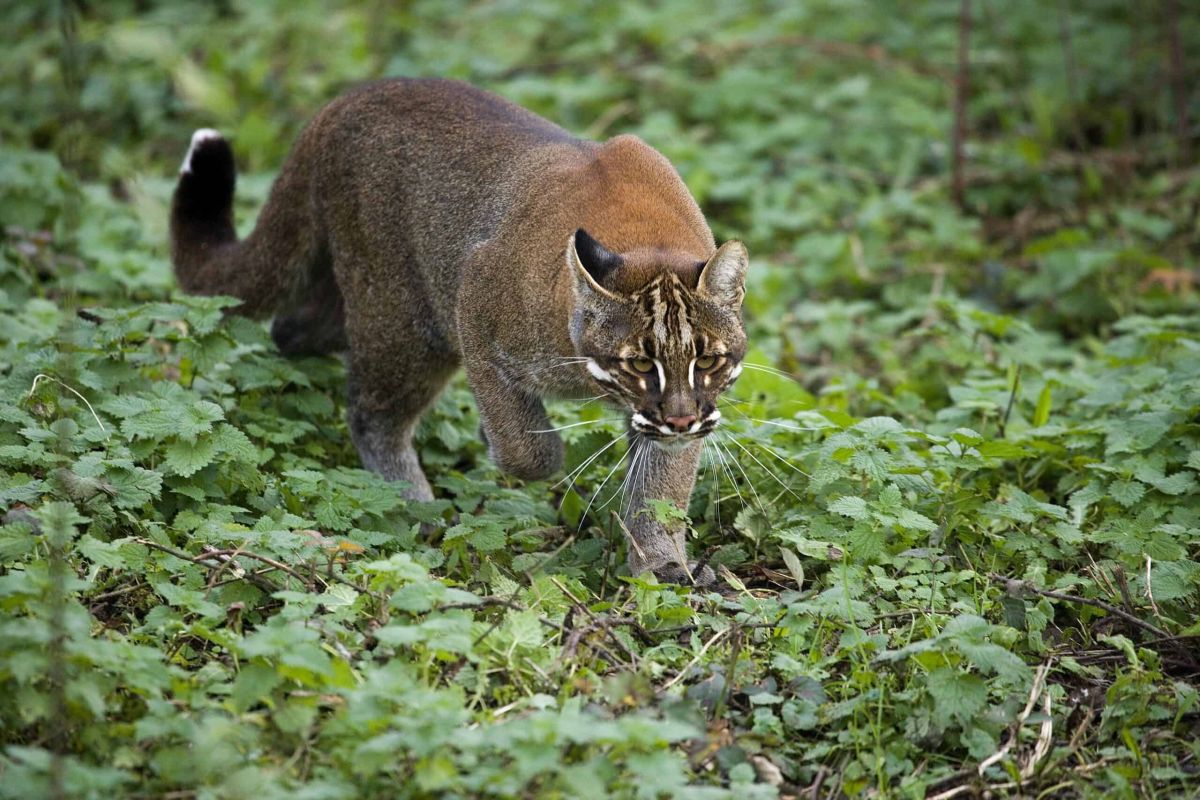The Asian Golden Cat: Marvel of the Wild

The Asian Golden Cat (Catopuma temminckii) is a captivating and enigmatic feline that inhabits the dense forests of Southeast Asia and parts of South Asia. Esteemed for its stunning coat and elusive nature, this wild cat is not only a remarkable predator but also plays a crucial role in its ecosystem. However, despite its captivating qualities, the Asian Golden Cat faces numerous threats that endanger its populations and habitats.
Physical Characteristics
The Asian Golden Cat is a medium-sized wild cat, characterized by its striking golden to reddish-brown fur, which provides excellent camouflage in its forest habitat. Adults typically weigh between 8 to 16 kg (17 to 35 lbs) and measure approximately 70 to 100 cm (27 to 39 inches) in length, excluding the tail. They possess a long, bushy tail, which aids in balance and navigation through the trees. The cat’s striking features include prominent cheek whiskers, medium-sized rounded ears, and large yellow-green eyes that exhibit keen vision, especially in low light conditions.
Habitat and Distribution
This elusive feline primarily inhabits dense tropical and subtropical forests, including evergreen and deciduous forests, mountain ranges, and even some secondary forests. The Asian Golden Cat’s range extends across various countries, including Bhutan, Myanmar, Thailand, Malaysia, Vietnam, and Indonesia. Despite its widespread distribution, it remains challenging to study these cats due to their secretive nature and the difficulty of accessing their remote forest habitats.
Behavior and Diet
Asian Golden Cats are predominantly solitary animals, coming together only for mating purposes. They are primarily nocturnal, displaying crepuscular behavior at dawn and dusk. These cats are excellent climbers, capable of navigating tree canopies and rocky terrains with ease. Their diet mainly consists of small to medium-sized prey, including rodents, birds, monkeys, and even smaller ungulates. This adaptability in hunting has enabled them to thrive in diverse environments.
Unlike many of their feline counterparts, Asian Golden Cats are known to exhibit some form of social behavior. They have been observed marking their territories with scent markings and vocalizing with various sounds, including growls and meows, to communicate with potential mates or rivals.
Conservation Status and Threats
The Asian Golden Cat is currently classified as Near Threatened by the International Union for Conservation of Nature (IUCN). Several factors contribute to its decline, including habitat loss due to deforestation, human encroachment, and poaching for the illegal wildlife trade. As their natural habitats shrink, these cats are increasingly coming into contact with human settlements, leading to potential conflict and increased vulnerability.
Furthermore, the wildlife trade poses a significant threat, as Asian Golden Cats are hunted for their beautiful pelts and are sometimes captured for the exotic pet trade. The fragmentation of their habitats due to agricultural expansion and infrastructure development further compounds these challenges, making it imperative to establish effective conservation strategies.
Conservation Efforts
To ensure the survival of the Asian Golden Cat, various conservation initiatives are underway across its range. Establishing protected areas and wildlife corridors is essential to preserve their habitats and allow for genetic exchange between fragmented populations. Additionally, raising awareness about the importance of these elusive cats and their ecological role is vital in garnering public support for their conservation.
Local communities are key stakeholders in conservation efforts. Engaging with them through sustainable livelihood programs can help alleviate the pressures on the cats’ habitats while fostering a sense of responsibility for the surrounding ecosystem. Organizations are also working to strengthen anti-poaching laws and promote alternative pest control measures that do not involve the harm of these cats.
Conclusion
The Asian Golden Cat is a testament to the rich biodiversity of Southeast Asia, embodying both beauty and mystery in its elusive nature. As pressures mount from habitat loss and illegal wildlife trade, it is crucial to intensify conservation efforts to protect this remarkable species and its ecosystem. Through collaborative efforts between governments, conservation organizations, and local communities, there is hope for ensuring a secure future for the Asian Golden Cat in the wild.



